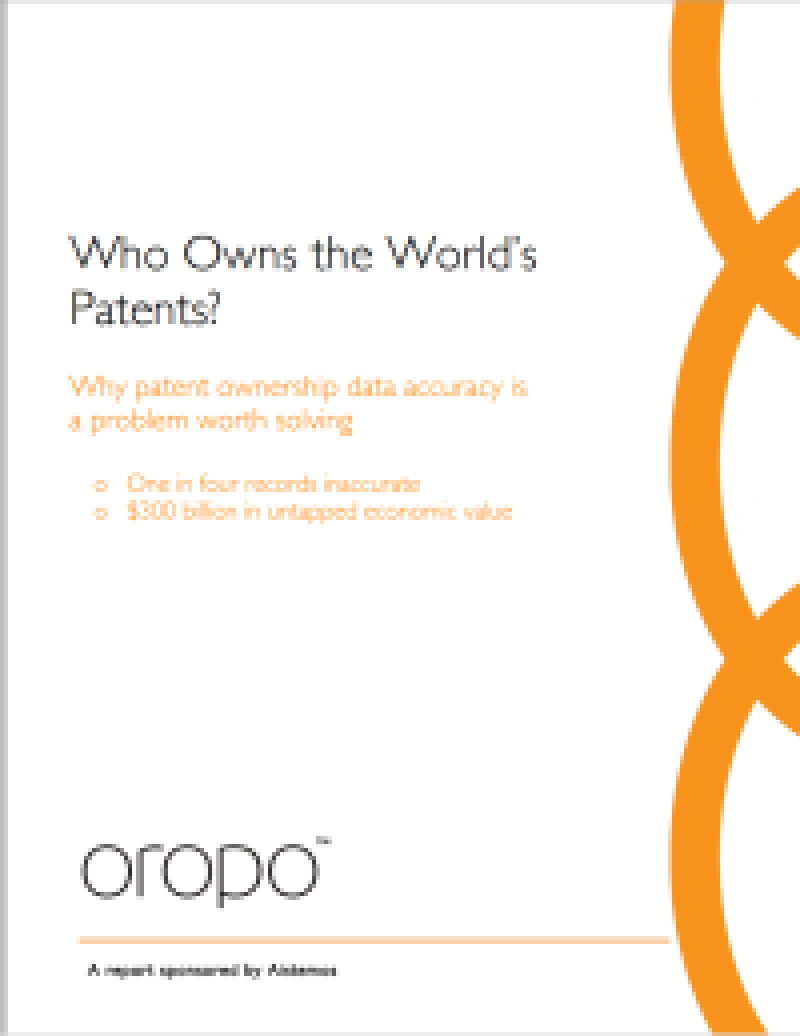
The four reports are:
The Future is Open: 2015 State of Innovation (Thomson Reuters) – looking at how companies such as Samsung and Toyota have embraced open innovation (right)
Innovation without borders: Six best practices to improve innovation success rates (Evalueserve) – including case studies of companies such as P&G, Clorox and Danone (below left)
Executing an open innovation model (Deloitte) – focusing on the biopharma industry
Who Owns the World’s Patents? (ORoPO) – concluding that lack of transparency about patent ownership impedes IP licensing (below right)

The Thomson Reuters report argues that there is indeed a trend towards collaboration, driven by the pace of innovation globally: “By leveraging that which has been done before and partnering with organizations that may solve for one aspect of an invention, companies are able to go to market more quickly and meet consumer demand for faster innovation time cycles.” For example, about 130 of every 10,000 patents filed by are done jointly with an academic institution, and it ranks among the top 25 innovators in nine of the 12 industries analysed.
But open innovation is not new, of course, and the Evalueserve report identifies best practices based on experiences of companies such as Unilever and Nestlé. These include setting up dedicated teams, building innovation networks and developing an organisational culture to support innovation. P&G’s Connect & Develop programme is an oft-cited open innovation success story: innovation from external sources jumped from 10% to more than 50% from 2001 to 2008, and gave us products such as Tide Pods and Crest White Strips.
Deloitte’s report argues that biopharma companies, where a “closed, traditional model” accounts for about 80% of products, might learn from other industries where collaboration is more common. In fact, its analysis found that open innovation products enjoyed a higher success rate than closed-model products – but mentioned concerns about IP rights as one brake on further take-up. “For biopharma companies, OI seems to be the way forward, as it appears to be a more cost- and time-effective way to bring drugs to market. In fact, several key trends will likely continue to drive the adoption of OI, especially at the most open end of the spectrum,” writes the report’s author, Ralph Marcello.

So is open innovation now set to soar across diverse industries? The final report mentioned above provides a note of caution: “Given the historic trend in licensing, is that a great deal more value could be realised, if inefficiencies and uncertainties in the system could be eliminated – by solving the problem of patent ownership data accuracy.” ORoPO is aiming to tackle this perceived problem by creating a global database of patent ownership, and already has some large IP owners on board.
One point that comes across in all of these reports is that effective open innovation requires engagement across an organisation, including the senior management, research, marketing and of course legal teams. Given the role played by patents and other IP rights, the involvement of the IP team is crucial, but are IP advisers (both in-house and outside) willing and able to make open innovation work, or are they still more comfortable following more traditional closed models? And, assuming your organisation wants to promote open innovation, what role should IP advisers play in implementing and developing it?
These are some questions that we will be coming back to over the next few months, and look forward to hearing readers’ views.









